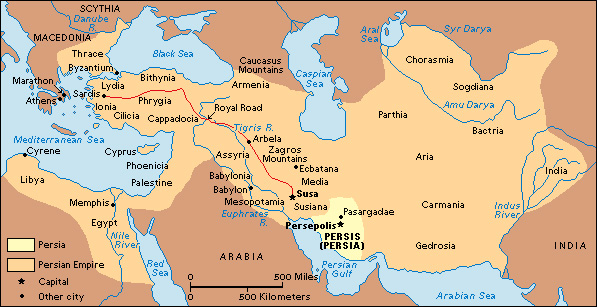Xerxes, << ZURK seez, >> I (519?-465 B.C.), ruled the Persian Empire from 486 B.C. until his death. He succeeded his father, Darius I, and spent several years trying to achieve his father’s goal of conquering Greece. Xerxes failed in this attempt, and Greek attacks succeeded in freeing coastal cities of Asia Minor (now part of Turkey) and islands in the Aegean Sea from Persian control.

During the early years of his reign, Xerxes put down revolts in the Persian provinces of Babylonia and Egypt. He then assembled a huge land and sea force to invade Greece. This force included more than 180,000 men drawn from all over the empire, which then stretched as far west as Libya and as far east as the Indus River in what is now Pakistan.
In 480 B.C., Xerxes led his army against a Greek force in a mountain pass at Thermopylae, northwest of Athens. The Greeks, led by troops from Sparta, held back the Persians until a traitor told Xerxes of another way through the mountains. The Persians attacked the Greeks from the rear and defeated them. The people of Athens then abandoned their great city. Xerxes burned many temples and other buildings in Athens.
Soon afterward, the Greeks and Persians fought in the Bay of Salamis. The Greeks had fewer ships but were better trained than the Persians for maneuvering in the small bay. Xerxes watched from a hillside on shore as the Greeks crushed his fleet. He then retreated to Asia Minor, leaving behind a small force.
In 479 B.C., Persian forces attacked the Greeks at Plataea, west of Athens, and were again defeated. In 467 or 466 B.C., Greek soldiers and seamen defeated Persian forces again at the mouth of the Eurymedon River, on the southern coast of Asia Minor. As a result a group of Persian nobles murdered Xerxes.
Greek historians and playwrights represented Xerxes as arrogant and cruel, but it is likely that the invasion of Greece was forced upon him. Difficult terrain and short supplies proved his worst enemies.
